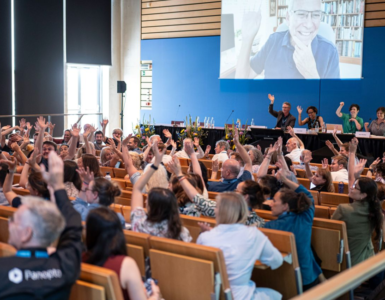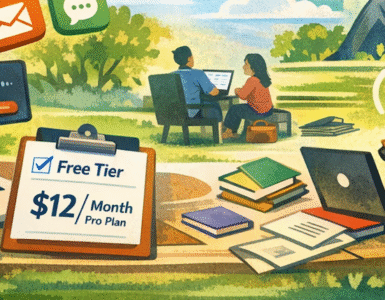by An Verburgh and Hilde Sarlet, UCLL, Belgium.
In this practice-oriented project, we developed a blended learning environment for learning to conduct a one-on-one counselling conversation with differences between the help seeker and the counselor (in short ‘complex communication’). Different programmes at our university college want their students to master this complex task. They however indicated that the available on-campus time was limited and students had very little time to practice. Hence the idea grew to develop a blended learning environment to increase opportunities to practice for the students and improve their mastery of the task.
Three different programmes started within the project, with the aim that the developed learning environment could be integrated in their regular schedule as a part of one of their modules (ranging from 10 to 25 hours planned study time) (see table 1). We composed a development team with lecturers from the participating programmes and two educational researchers. These lecturers involved their colleagues in their programmes.

Table 1 Descriptors of the broader context of the developed learning environment
The learning environment is designed according to the principles of the 4C/ID model, a whole-task instructional design model for complex learning. In line with the model, the learning environment contains a series of learning tasks with growing levels of complexity (conversations with few differences, more complex conversations and highly complex conversations) (see Figure 1). Tasks with the same level of complexity offer first a lot of support which gradually fades in the next tasks. Students use a conversation scheme (procedural information), which helps them to analyse or structure a conversation, based on the theoretical framework they learned.
The learning environment consists of alternating online asynchronous and face-to-face moments. In the online environment, theoretical frameworks are offered with text, presentations, and clips (supportive information), with quizzes to self-assess their understanding. Next, students are given short assignments (learning tasks) with a video and written case. All cases related to the professional contexts of the three programmes. The first assignment is a worked-out example of a video case. The autonomy in the tasks gradually grows. Students have to submit some of their assignments. In the face-to-face moments, students receive feedback on their online work, discuss difficulties, and do role-play. Answer keys of the cases are available online. The assignments and the role-play give students many opportunities to practice.

The first run of the newly developed learning environment was in the spring semester of 2022-2023 and the second in spring 2023-2024. In the online part student activities were logged, in addition to short online logbooks after each online learning part, with three questions (what did you like, what did you dislike and how long did you work on it). In addition, we conducted focus groups with students and with the lecturers of each of the three programmes and we analysed the exam results.
The results indicate that students were active online, although less than expected and the activity level differed between the programmes, students of programme C were more compliant that students of programme B. Lecturers reported high presence in the face-to-face contact moments and active involvement of the students. Students appreciated the opportunities to practice. Some noticed the gradual growth towards more complex cases. They expressed the value of the online activities for the face-to-face moments. Students could solve a case sufficiently during their exams. In the first run students indicated they had difficulties to relate this learning environment to the overall module. In the second run we gave additional attention to its position in the module, with among others, an introduction session on campus and frequent clarification of the value of the online parts. These changes improved clarity for students. In the first run all cases were equal for the three programmes, because we assumed that the professional contexts were close enough to make the transfer easily. Students and lecturers however indicated they would appreciate more cases within the professional context, which we did in the second run (see figure 1). Some cases we kept equal over the programmes in addition to cases of the own professional context. Students and lecturers appreciated this change highly.
In conclusion
The developed learning environment helps students to master the complex task sufficiently. The blended learning environments improved opportunities to practice complex communication. The experiences of 2022-2023 resulted in valuable information for improvements that were implemented in spring 2024, specifically about the relation and pace between the on- and off-line moments and the importance of the position of the learning environment in the course and the programme.
Please, feel free to contact us if you are interested to see the actual learning environment’ (Hilde.Sarlet@ucll.be; An.verburgh@ucll.be)
Authors

An Verburgh works as a practice-oriented researcher and educational developer at UCLL.

Hilde Sarlet, general practitioner, teaches pathology and pharmacology in the nursing programme of UCLL and is the lead designer of the learning environment.














